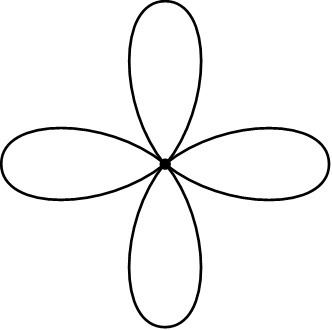 | ||
In mathematics, a rose (also known as a bouquet of n circles) is a topological space obtained by gluing together a collection of circles along a single point. The circles of the rose are called petals. Roses are important in algebraic topology, where they are closely related to free groups.
Contents
Definition
A rose is a wedge sum of circles. That is, the rose is the quotient space C/S, where C is a disjoint union of circles and S a set consisting of one point from each circle. As a cell complex, a rose has a single vertex, and one edge for each circle. This makes it a simple example of a topological graph.
A rose with n petals can also be obtained by identifying n points on a single circle. The rose with two petals is known as the figure eight.
Relation to free groups
The fundamental group of a rose is free, with one generator for each petal. The universal cover is an infinite tree, which can be identified with the Cayley graph of the free group. (This is a special case of the presentation complex associated to any presentation of a group.)
The intermediate covers of the rose correspond to subgroups of the free group. The observation that any cover of a rose is a graph provides a simple proof that every subgroup of a free group is free (the Nielsen–Schreier theorem)
Because the universal cover of a rose is contractible, the rose is actually an Eilenberg–MacLane space for the associated free group F. This implies that the cohomology groups Hn(F) are trivial for n ≥ 2.
